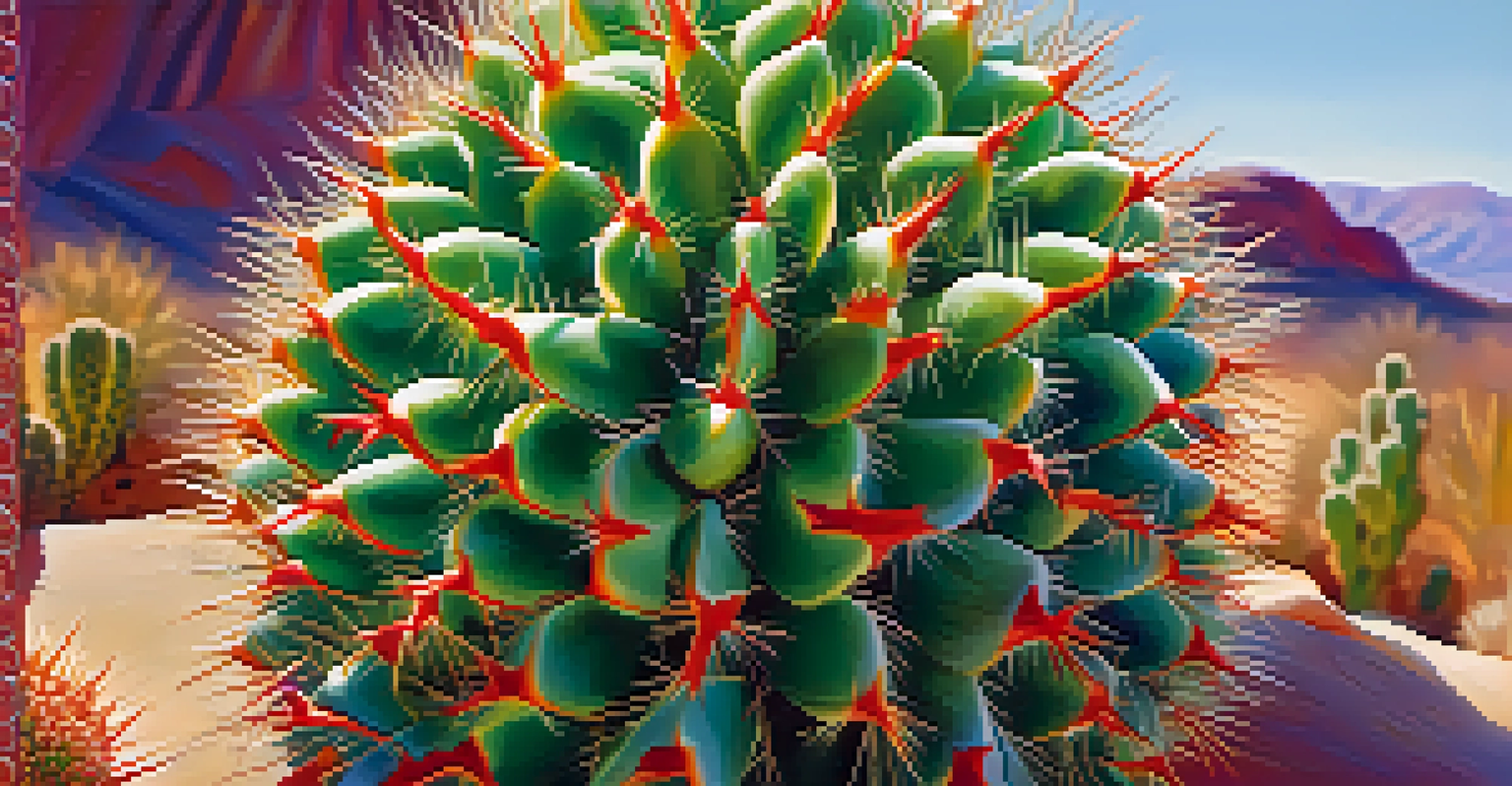Understanding the Symbolism of Peyote in Ceremonies

The Historical Context of Peyote in Indigenous Cultures
Peyote, a small cactus native to Mexico and the southwestern U.S., has been used for thousands of years by Indigenous peoples. Its history is rich and intertwined with various cultural practices and spiritual beliefs. For many tribes, peyote is not just a plant; it represents a connection to their ancestors and the divine.
Peyote is a sacred plant, and its use is deeply rooted in the spiritual traditions of Indigenous cultures.
Historically, peyote was used in healing rituals and as a means of seeking guidance through visions. The traditions surrounding its use vary widely among different tribes, yet the underlying theme is similar: a deep respect for nature and the belief in a higher power guiding their lives. This cultural heritage continues to influence contemporary practices.
Understanding the historical context of peyote provides insight into its significance today. It is not merely a substance but a symbol of identity, resilience, and spiritual awakening for many Indigenous communities.
Peyote's Role in Spiritual and Healing Practices
In many Indigenous cultures, peyote is viewed as a sacrament that facilitates communication with the spirit world. It is often consumed during ceremonies to induce altered states of consciousness, allowing participants to gain insight and clarity. This experience is highly personal, often leading to profound revelations about one's life and purpose.

The healing properties attributed to peyote extend beyond physical ailments. Many users report emotional and psychological healing, as the ceremonies often provide a safe space for reflection and connection with others. This communal aspect reinforces the idea that healing is not an individual journey but a shared experience.
Peyote's Cultural Significance
Peyote serves as a symbol of identity and resilience for Indigenous communities, reflecting their deep spiritual connections and cultural heritage.
Through these spiritual practices, peyote symbolizes hope and renewal. It serves as a reminder that there are pathways to understanding oneself and the universe, emphasizing the importance of introspection and community support.
The Symbolism of Peyote in Ceremonial Settings
Peyote holds deep symbolism within ceremonial settings, often representing rebirth and transformation. The act of consuming the cactus can be seen as a metaphor for shedding old beliefs and embracing new perspectives. This transformation is not just physical; it is spiritual and emotional, marking a pivotal moment in an individual's journey.
The importance of peyote is not just in its psychoactive effects, but in its role as a symbol of cultural identity and resilience.
During ceremonies, participants often engage in songs, prayers, and rituals that honor the peyote and its significance. These elements work together to create a sacred space where the symbolism of the cactus can be fully realized. The ceremonies become a tapestry of shared experiences, weaving together personal and collective narratives.
As such, peyote is more than a catalyst for visions; it embodies the spirit of community and the cycle of life. Its use in ceremonies reinforces the belief that every ending can lead to a new beginning, encouraging participants to embrace change and growth.
Cultural Appropriation and Respect for Traditions
As interest in peyote has grown outside Indigenous communities, the issue of cultural appropriation has emerged. It’s crucial to understand that the use of peyote is sacred and rooted in specific cultural contexts. When individuals outside these cultures partake in peyote ceremonies without proper understanding, it can lead to a dilution of its significance.
Respecting the traditions surrounding peyote requires acknowledging the historical and cultural narratives of Indigenous peoples. This includes understanding their struggles and the ongoing fight for their rights to practice their traditions freely. Engaging with these cultures should always be approached with humility and a desire to learn.
Spiritual Healing Through Peyote
In ceremonies, peyote is viewed as a sacrament that fosters emotional and psychological healing, emphasizing the communal aspect of the healing journey.
By fostering a respectful dialogue around peyote, we can honor its true meaning and support Indigenous communities in their efforts to preserve their cultural heritage. This awareness can lead to deeper connections and a more genuine appreciation for the symbolism of peyote.
The Psychological Effects of Peyote in Ceremonies
The psychological effects of peyote during ceremonies can be profound, often leading to insights that feel deeply transformative. Many participants describe experiences of heightened awareness, emotional release, and a sense of interconnectedness with nature and others. These effects can vary widely based on individual experiences and intentions.
Research has shown that substances like peyote can promote neuroplasticity, the brain's ability to reorganize itself by forming new connections. This scientific perspective aligns with the anecdotal evidence from many who have participated in ceremonies, suggesting that peyote can foster personal growth and healing.
However, it’s essential to approach these experiences with care and preparation. Understanding the psychological landscape of peyote use can help participants navigate their journeys more safely and effectively, ensuring that they derive meaningful insights from their experiences.
Modern Adaptations of Peyote Ceremonies
In today's world, peyote ceremonies have evolved, blending traditional practices with contemporary approaches. Some Indigenous leaders have embraced this shift, creating spaces that welcome both community members and interested outsiders who seek to understand the significance of peyote. This evolution highlights the adaptability of these traditions while maintaining their core values.
Modern adaptations often incorporate discussions around mental health, spirituality, and personal development. These elements reflect a growing recognition of the importance of holistic well-being, expanding the traditional narratives surrounding peyote use. Participants are encouraged to engage in meaningful conversations about their experiences, fostering a deeper understanding of the plant's significance.
Respecting Indigenous Traditions
Engaging with peyote requires understanding its sacred cultural context and respecting the traditions of Indigenous peoples to avoid cultural appropriation.
While these adaptations can enrich the experience, they also underscore the need for respectful engagement with Indigenous traditions. It's essential to honor the roots of these practices while recognizing the value they can bring to modern life.
Conclusion: Embracing the Symbolism of Peyote
The symbolism of peyote in ceremonies is a multifaceted concept that encompasses history, spirituality, and community. By understanding its significance, we can appreciate not only the cultural heritage it represents but also the personal transformations it can inspire. Peyote serves as a bridge between the past and present, encouraging us to reflect on our own journeys.
As we engage with the symbolism of peyote, we are reminded of the importance of respect and understanding in our interactions with Indigenous cultures. Acknowledging the historical context and current struggles of these communities is crucial in fostering genuine connections and supporting their rights.

In embracing the symbolism of peyote, we invite a deeper awareness of ourselves and the world around us, promoting growth, healing, and unity. Whether through direct participation or thoughtful reflection, the lessons of peyote can guide us toward a more meaningful and connected existence.